Helena crouches down, lifts the pot lid and wafts the rising steam towards her nose. “Time for the mushrooms,” she says. A basketful of chopped fungi is thrown into the simmering stew and stirred. “That will thicken it.” The lid is replaced. “We need a few more coals on top of the lid.”
We’re cooking in a Dutch oven, a hefty cast-iron cauldron. Underneath and on top of it are glowing embers from the nearby campfire. The lamb came from a farm down the coast, but most of the other ingredients we foraged earlier, notably the mushrooms: porcini, ceps and boletes.
I’m on an uninhabited Swedish island in the Baltic Sea, one of about 6,000 such outcrops that form the Saint Anna archipelago, part of the larger Östergötland archipelago. Each is a mix of bare granite and forest tucked up inside a skirt of reeds. A few possess a simple fisher’s cabin or a more substantial house, but most are wild and rarely visited.
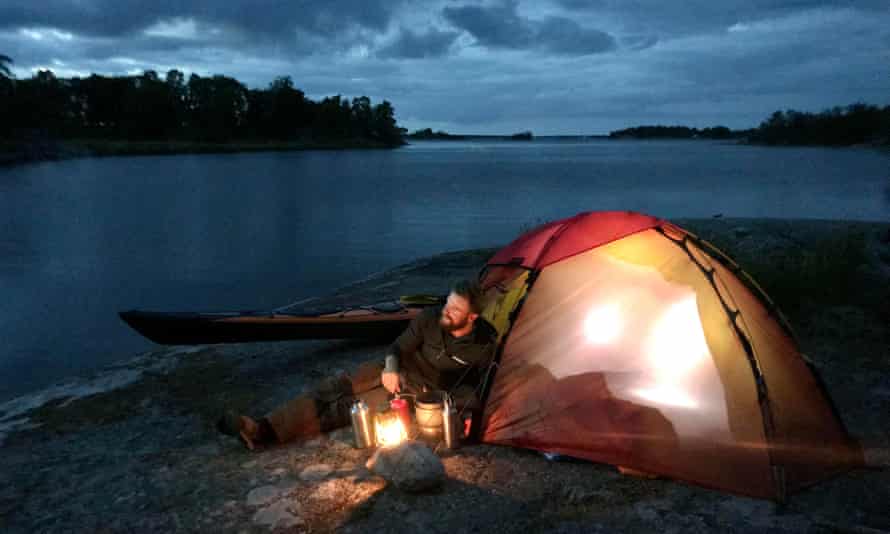
“You can camp anywhere in Sweden,” says Helena, “except near a house.” That doesn’t appear to be a difficult restriction in this place.
I’m on a kayaking-and-foraging adventure, with Helena as chef and culinary tutor, plus Thomas the kayak guide. Many people, though, do these trips self-guided. The recipe is simple: a solid base of camping knowledge, a splash of kayak experience and tons of common sense.
Sweden is considered one of the world’s more expensive places to visit, but here we are at our free campsite eating large amounts of free food. We’re dropped on the island of Mon, connected to the mainland by a causeway, then paddle out four hours with a stop for lunch and foraging. Thomas steers us into a little bay where he knows how to find what’s on Helena’s shopping list – various berries and wild salad leaves. I, however, am immediately distracted by the fungi, always a fascination for me: there are just so many species, and in such abundance.

“There are many edible varieties,” says Thomas, “but chanterelles are the best. With a bit of luck, we might find some – not here though. Let’s concentrate on filling Helena’s shopping list – did you find any juniper berries?”
Once we find those tiny, pungent balls, we paddle on, passing through two bird reserves. A sea eagle soars overhead and cormorants are drying their wings on rocks. Sometimes these sea passages between islands are quite choppy, involving hard paddling and plenty of spray in the face. Thomas, however, is always quick to spot when a break is needed.
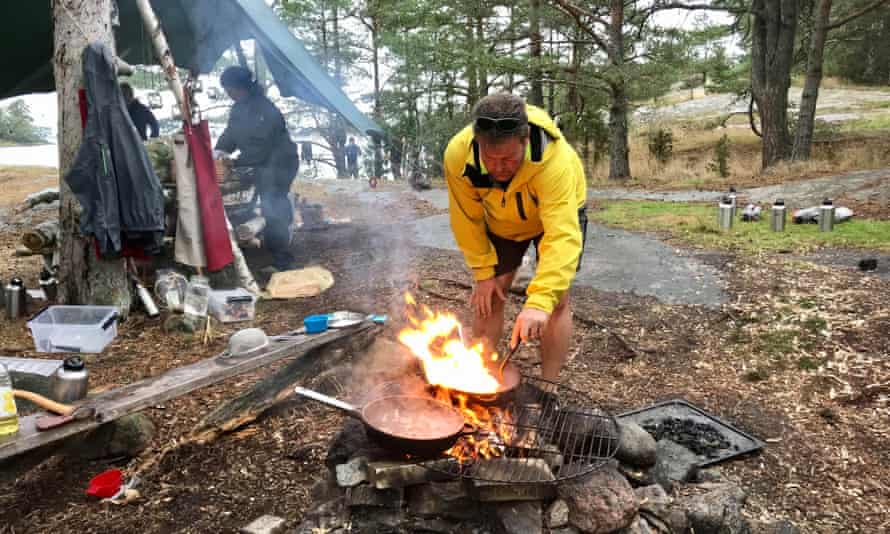
At our lunch stop on one island, I wander off, exploring what feels like a tiny atoll. Creeping through thickets of oak, birch and Scots pine on carpets of deep moss, I am entranced by the tiny worlds at my feet: microscopic gardens of vivid green and scarlet lingonberries growing through silvery reindeer moss; gnarled and stunted pines tended by that severe bonsai master, the Scandinavian winter. I emerge on a granite slope, climb to a low summit and look up. The view is wonderful, but surprising. And there’s no sign of Thomas.
I’m disoriented by the fact that the island is not, as I had assumed, a neat oval, but a sprawling multi-legged monster. For the next 20 minutes I have the exquisite sensation of feeling utterly lost and alone while knowing I can’t be. Then I spot the kayaks.
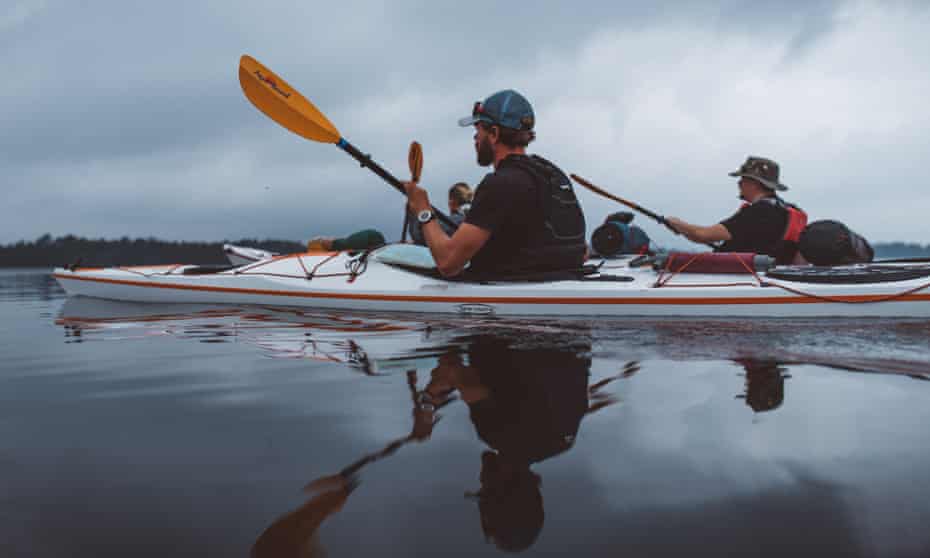
Another hour of paddling and we reach the camp where Helena is already getting started on dinner. I help mix dough for flatbreads that we cook in a big skillet.
“I do use recipes,” Helena says, “some by Margareta Elzberg, who wrote the first Swedish cookbook, in the 18th century. But I learned a lot from my grandmother. She’d migrated from the north of Sweden, taking her cow on the train with her, and settled further south. She’d learned to cook on a fire, without temperature gauges or recipes. It’s instinctive. You use all your senses. You pick things in the forest, work with the seasons and what you’ve got.”
What Helena also brings is an ability to conjure a feast. This is not about learning to fill your belly, but learning how to do it in style. We have a table and benches made from birch logs: it’s hung with lanterns and strewn with jars of homemade pickles and wild berry jams. There are hors d’oeuvres laced with edible greens, perch from the brackish Baltic water, flambées of wild pears – plus a few bottles of wine foraged in a faraway Systembolaget, Sweden’s state alcohol monopoly.
The days go by all too fast. I camp on an elevated patch of soft meadow with a fine view. At night there’s no artificial light and the only sound is the gentle slap of waves on the granite boulders below.
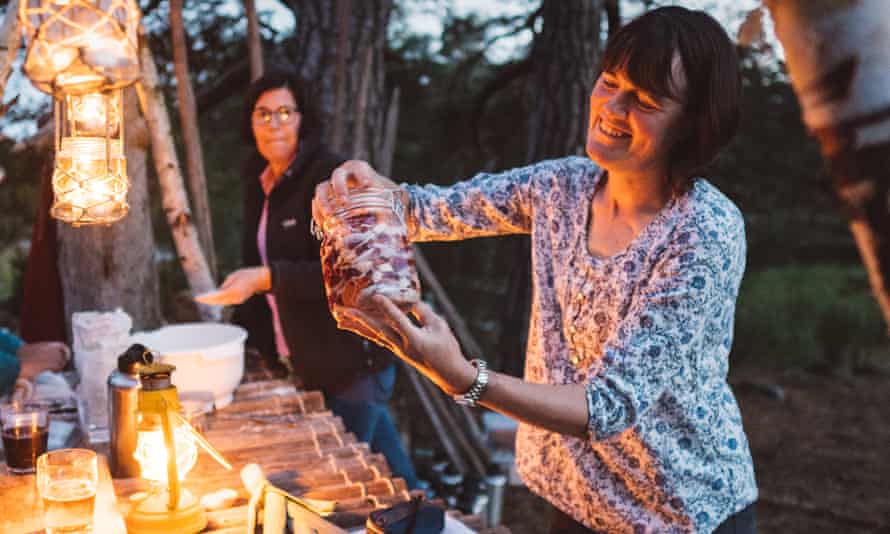
I learn the right way to chop vegetables; I carve kitchen utensils round the fire; I hear the history behind the recipes and how Helena has adapted them; I make bread and apple crumble in a Dutch oven on a campfire, a fire that Helena constantly tends. Every day we paddle off on an expedition, smacking into waves as we pass between islands, but mostly in idyllic calm. I usually finish with a short swim when the fire is burning well, ready to dry me off.
On the last full day we cross to a nearby island which is a favourite mushrooming spot. Helena’s advice when it comes to fungi is simple: don’t touch anything with gills and don’t pick anything white (a caution that applies to these islands but not necessarily elsewhere).
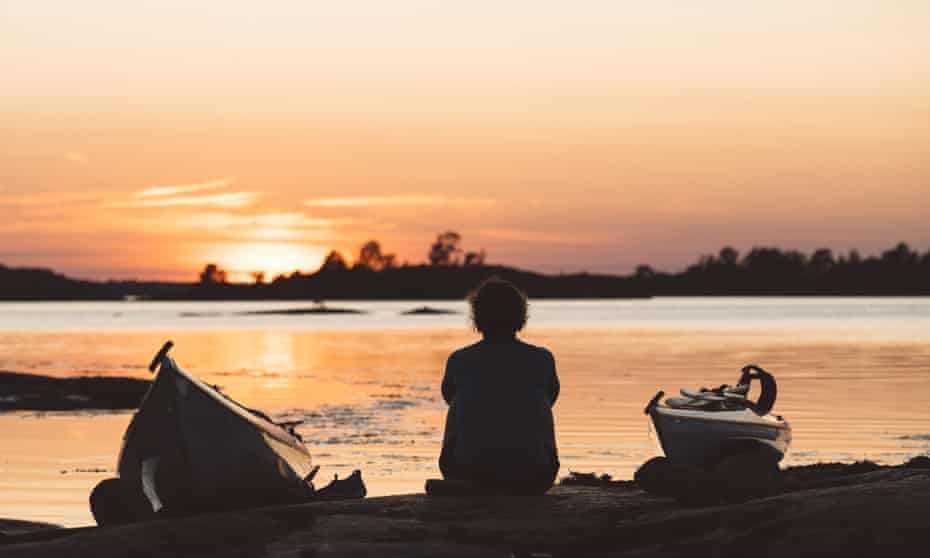
There are chanterelles here, she says, and they have wrinkles that run down the stem. With these simple instructions I wander away, rapidly getting lost once again. The thick moss is full of boletes, sturdy mushrooms with pores under the cap rather than gills, just the type Helena wants. But it’s the chanterelle I desire, never having picked one. I climb a granite hillside that dips away through waves of mossy pines and crusty lichens into a dappled forest of oak and pine. Hadn’t Thomas said chanterelles need deep shade? I head for the thickest thicket and, pushing my way inside, find myself face to face with a rather surprised deer.
For a moment we stare at each other, one deer ear revolves a quarter turn, and then in one glorious giddy leap it’s gone. Beneath where it had stood dozens of yellow-topped mushrooms, are peeping through the moss. I creep forwards, minding my feet. Incredibly, a deer has shown me to my first chanterelles. I reach out and only then realise that my chanterelles are, in fact, windfall crab apples. This is a hunt I will happily resume another time.
Getting there
It’s a long rail journey from the UK, but thoroughly enjoyable. Booking well in advance keeps costs down. Head to Hamburg (from about £100 return) for an overnight stop, then head for Norrköpping via Copenhagen (from £50).



